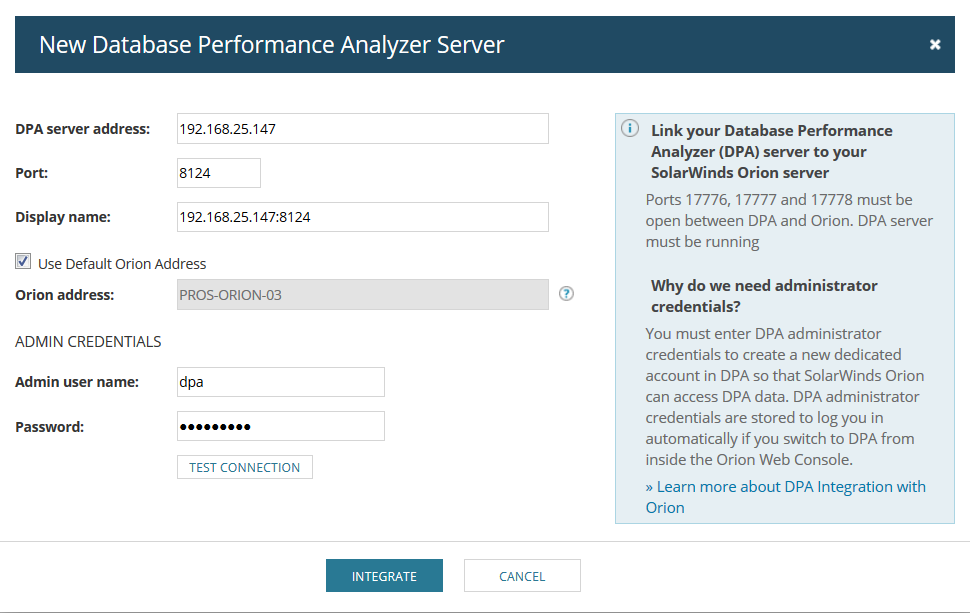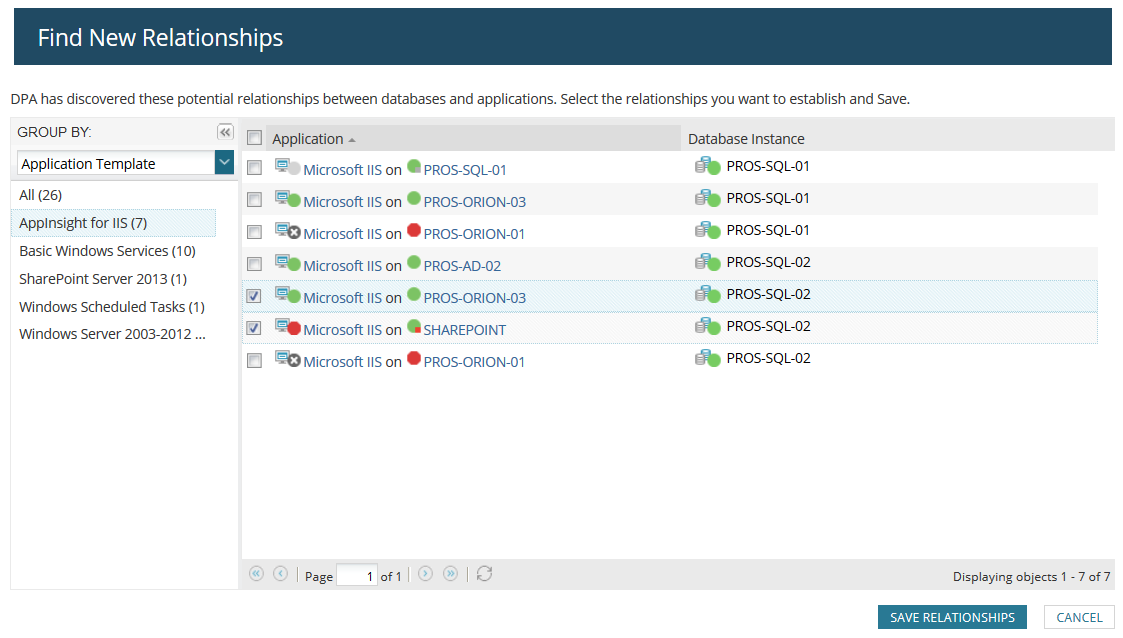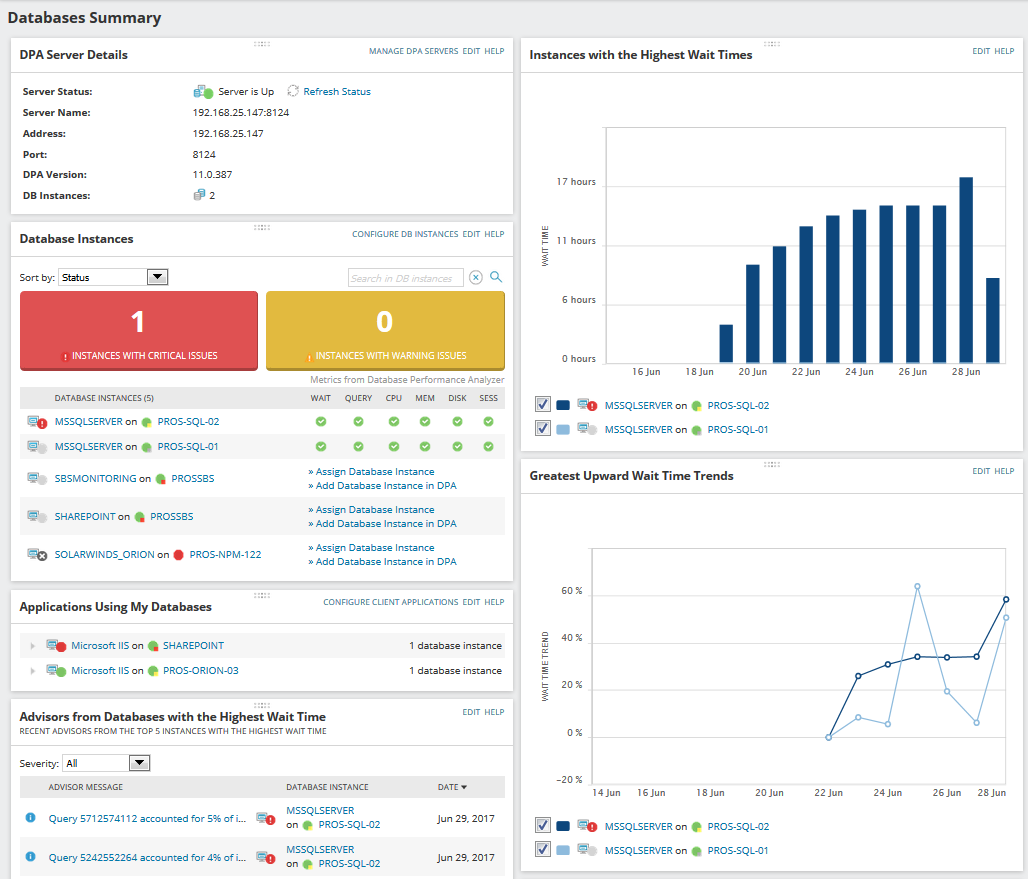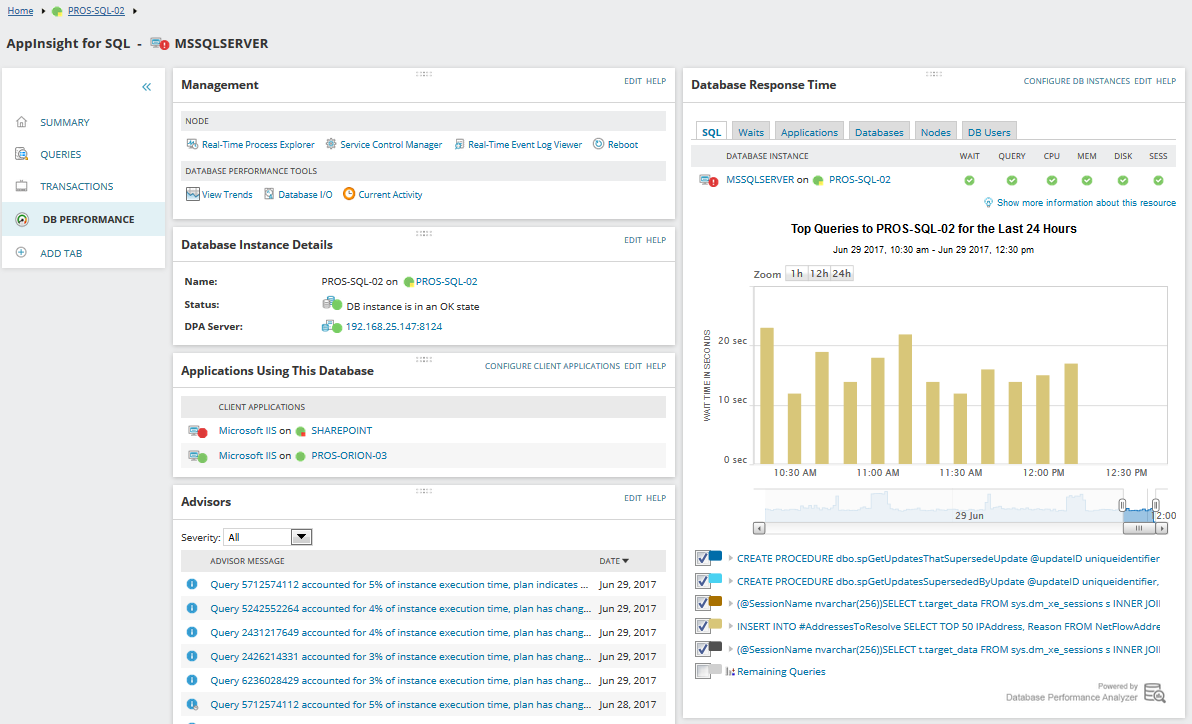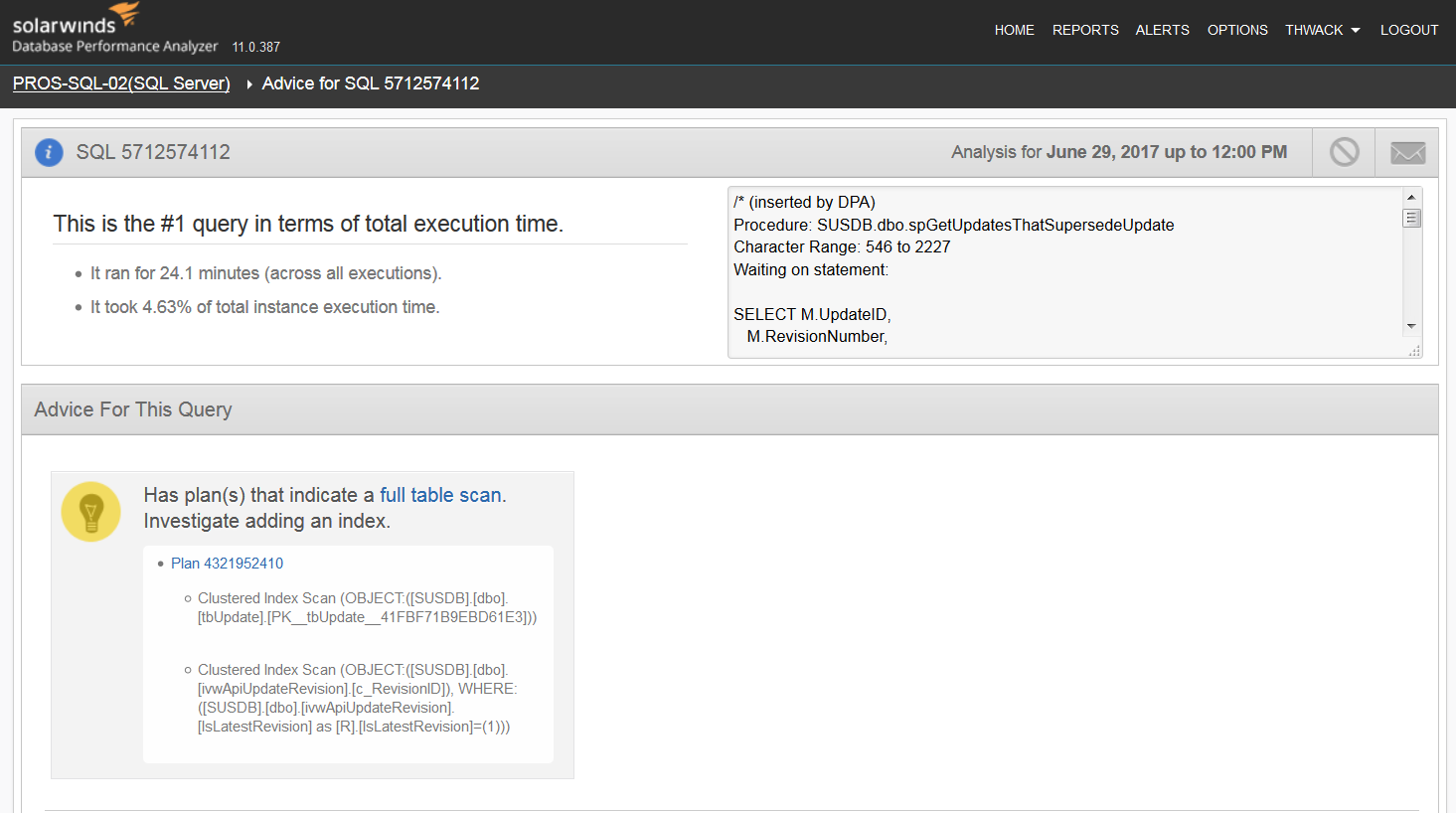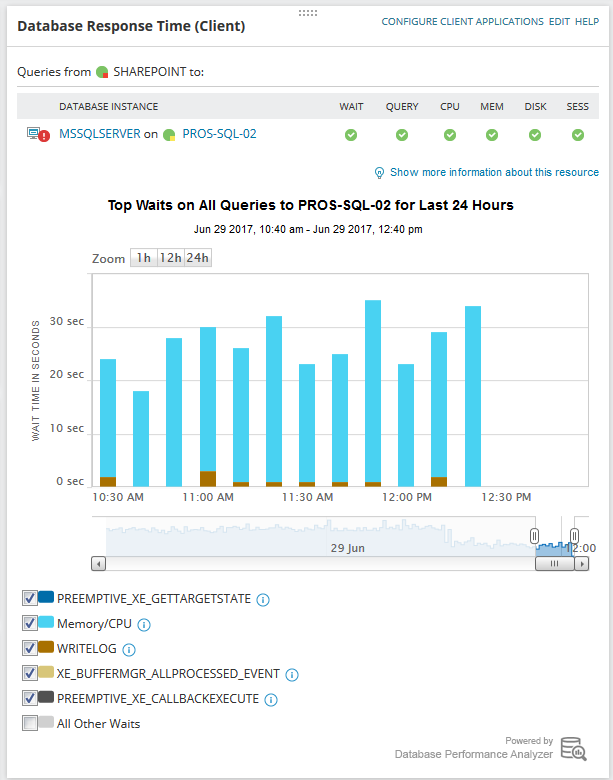SolarWinds Patch Manager & Orion Platform Integration – Part 2
SolarWinds Database Performance Analyzer (DPA) is an agentless database monitoring tool that allows diagnosing and tuning performance issues on different types of relational databases including SQL Server, Oracle, MySQL and DB2. DPA is a standalone application but it can easily be integrated with Orion platform to allow reporting and alerting and with strong information integration with the SolarWinds Server & Application Monitor (SAM) and SolarWinds Storage Resource Monitor (SRM) modules to improve visibility and to reach the root cause of an issue efficiently.
I would like to give information on how to integrate DPA with Orion platform briefly and then describe the management of relationships between DPA database instances and SAM applications or SRM storage LUNs. Lastly, I want to describe out-of-the-box views on Orion Platform and to demonstrate the single pane of glass approach on Orion platform to combine multiple DPA instances and to combine different modules of SolarWinds.
Database Performance Analyzer and Orion Platform Integration Configuration
To integrate DPA with Orion Server, the DPA integration should be installed on Orion server, which if you have SAM v6.2.1 and later version, it is a default inclusion within the installation.
To configure integration; click “Database Performance Analyzer” on Settings page under “Product Specific Settings” part. Then click on “Manage DPA Servers” link under “DPA Integration”. On this page you will see this button to add your DPA server:
The next thing that should be done is adding relationships for your databases.. You should click on “Manage Relationships” link under “DPA Integration” on “Database Performance Analyzer” page. You will see the page below with 3 tabs; Database Instances, Client Applications and Storage Objects.
Client applications tab is initially empty. You should click on “Find New Relationships” to see discovered relationships and select proper ones. It is important to map correct client applications to the related database instances:
Orion Views for Databases:
After successfully integrating DPA with Orion platform, it is possible to see data from DPA on “Databases Summary” view that can be reached from “My Dashboards” -> “Databases” menu item:
The Database Instances resource shows data from DPA database instances and related SAM AppInsight for SQL applications. Wait, Query, CPU, Memory, Disk and Session columns are fed from DPA and instance status information is collected from SAM AppInsight for SQL application.
“Instances with the Highest Wait Time” chart shows daily wait time for database instances and it is beneficial to compare database instances and detect anomalies.
“Applications Using My Databases” shows the status of the client applications that are defined in client application relationships.
“Advisors from Databases with the Highest Wait Time” resource shows the most expensive queries and shows advice to decrease execution time for these queries that would improve database performance significantly.
If you click on a database instance on any chart or on “Database Instances” source, you will see the “DB Performance” tab of the related AppInsight for SQL application view. All the data on this view comes from DPA and it allows you to see performance statistics for this database with query advisors and client applications.
Product Trial: SolarWinds Patch Manager

Ecmel Ozdemir
Snr. SolarWinds Engineer
Product Trial: SolarWinds Patch Manager
Related Insights From The Prosperon Blog
Enhance Database Monitoring with SolarWinds SQL Sentry
Recent Improvements to SQL Sentry In the fast-paced world of database management, staying on top of performance monitoring and optimisation is crucial. Database...
Database in Distress – important Database metrics on one screen with SolarWinds
Webinar: Database in Distress How to understand important Database metrics on one screen with SolarWindsIn this Webinar on Monday 5th June, you will discover how SolarWinds®...
Webinar On-Demand: SolarWinds Database Monitoring – Actual Bona Fide Database Administrators
In this webinar, you will discover how SolarWinds® can help Database Administrators to meet their advancing Database monitoring and configuration challenges. This webinar...

